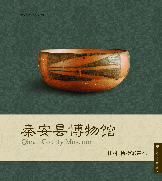
主要责任者: 甘肃省文物局
责任方式: 编
出版者: 甘肃人民美术出版社
出版地: 兰州
页码: 1-33
中图分类号: K872.424
分辑名:第1辑
语种:中
出版时间:丛书多卷书否:是
丛书名:甘肃博物馆巡礼
书目简介:本册工具书是甘肃博物馆巡礼之一,共收录36条词条。
被引频次:1
| 词条 | 秦安县博物馆 |
| 类别 | 中文百科知识 |
| 释义 |  主要责任者: 甘肃省文物局 责任方式: 编 出版者: 甘肃人民美术出版社 出版地: 兰州 页码: 1-33 中图分类号: K872.424 分辑名:第1辑 语种:中 出版时间:丛书多卷书否:是 丛书名:甘肃博物馆巡礼 书目简介:本册工具书是甘肃博物馆巡礼之一,共收录36条词条。 被引频次:1 |
| 随便看 |
开放百科全书收录579518条英语、德语、日语等多语种百科知识,基本涵盖了大多数领域的百科知识,是一部内容自由、开放的电子版国际百科全书。